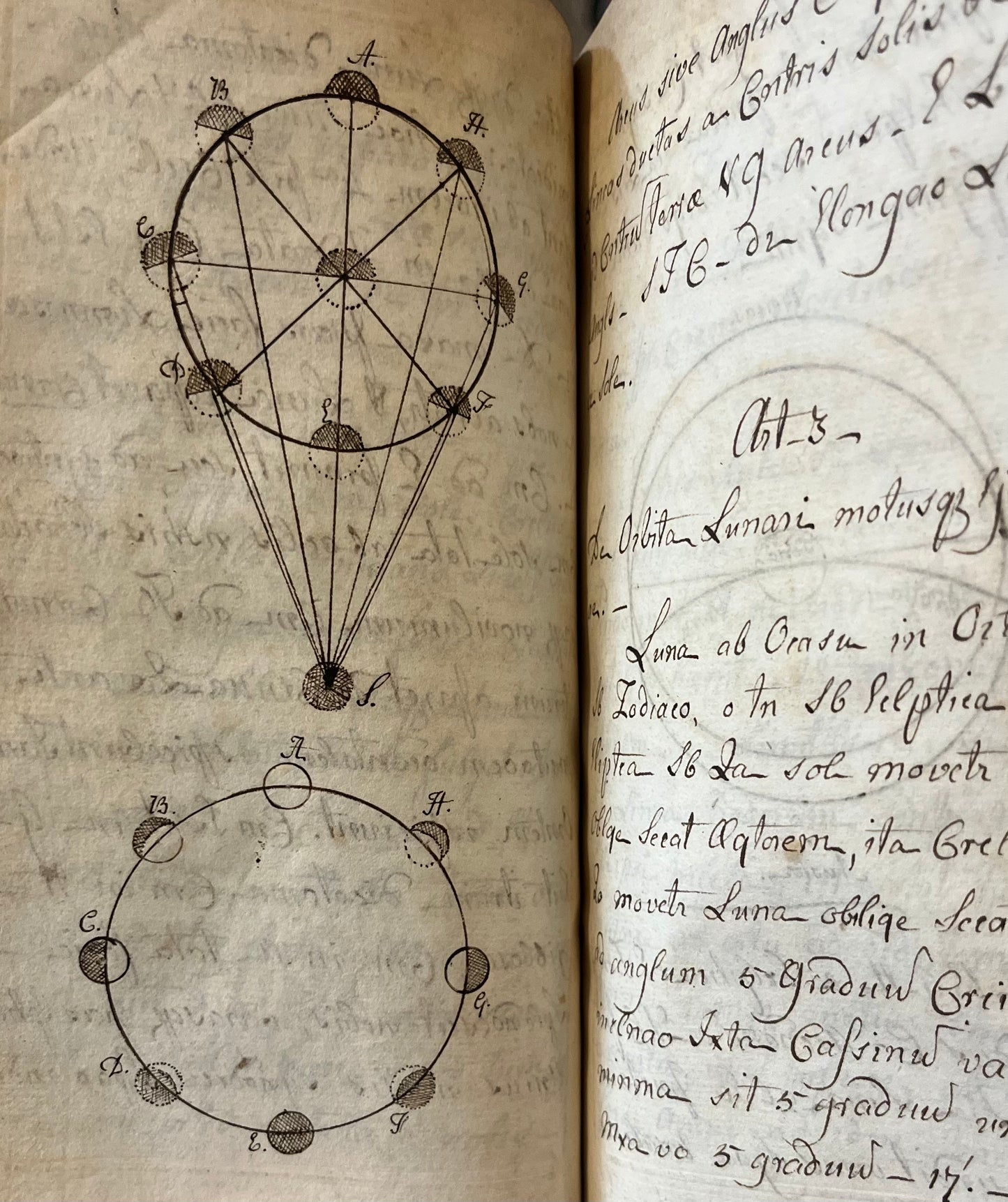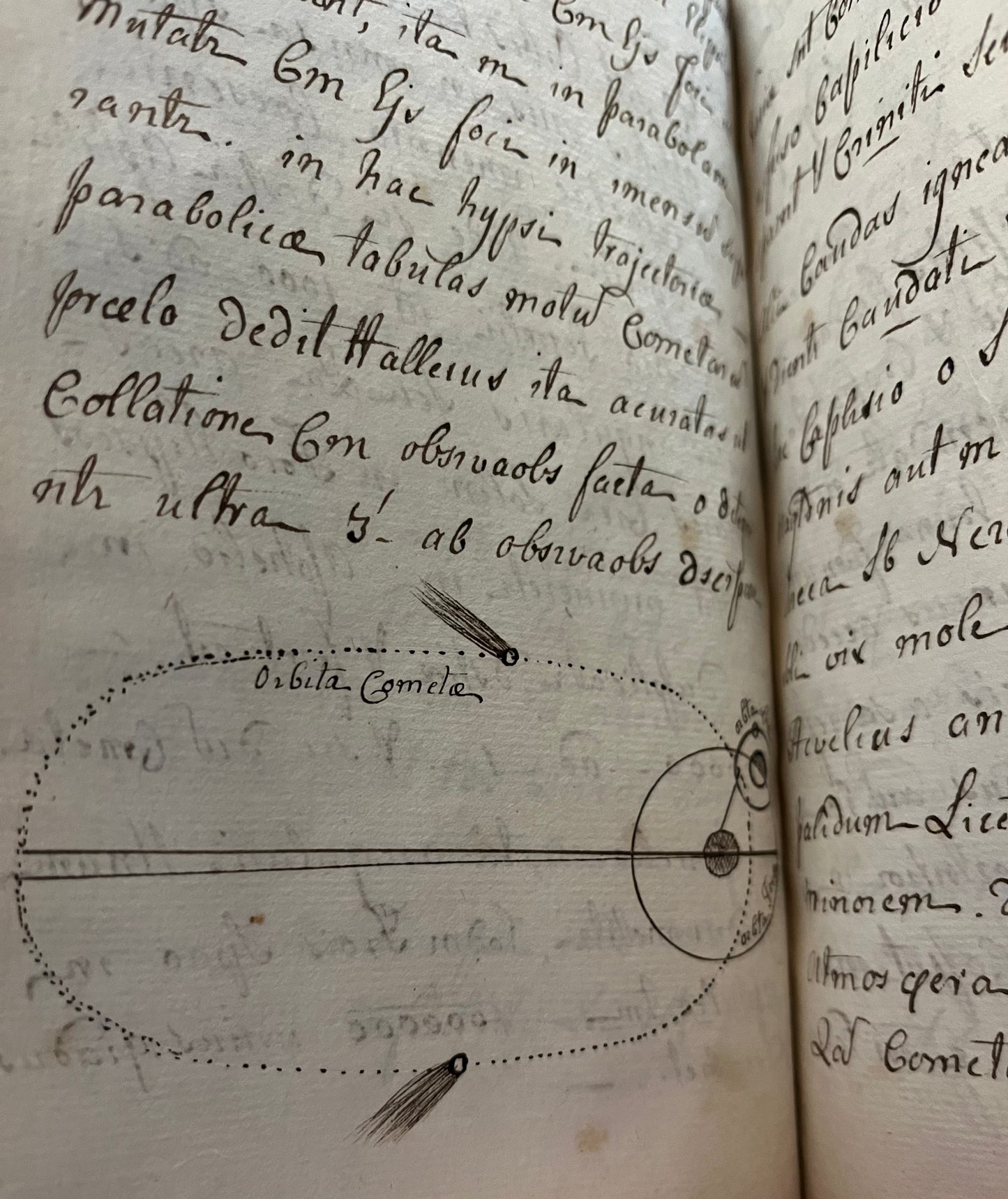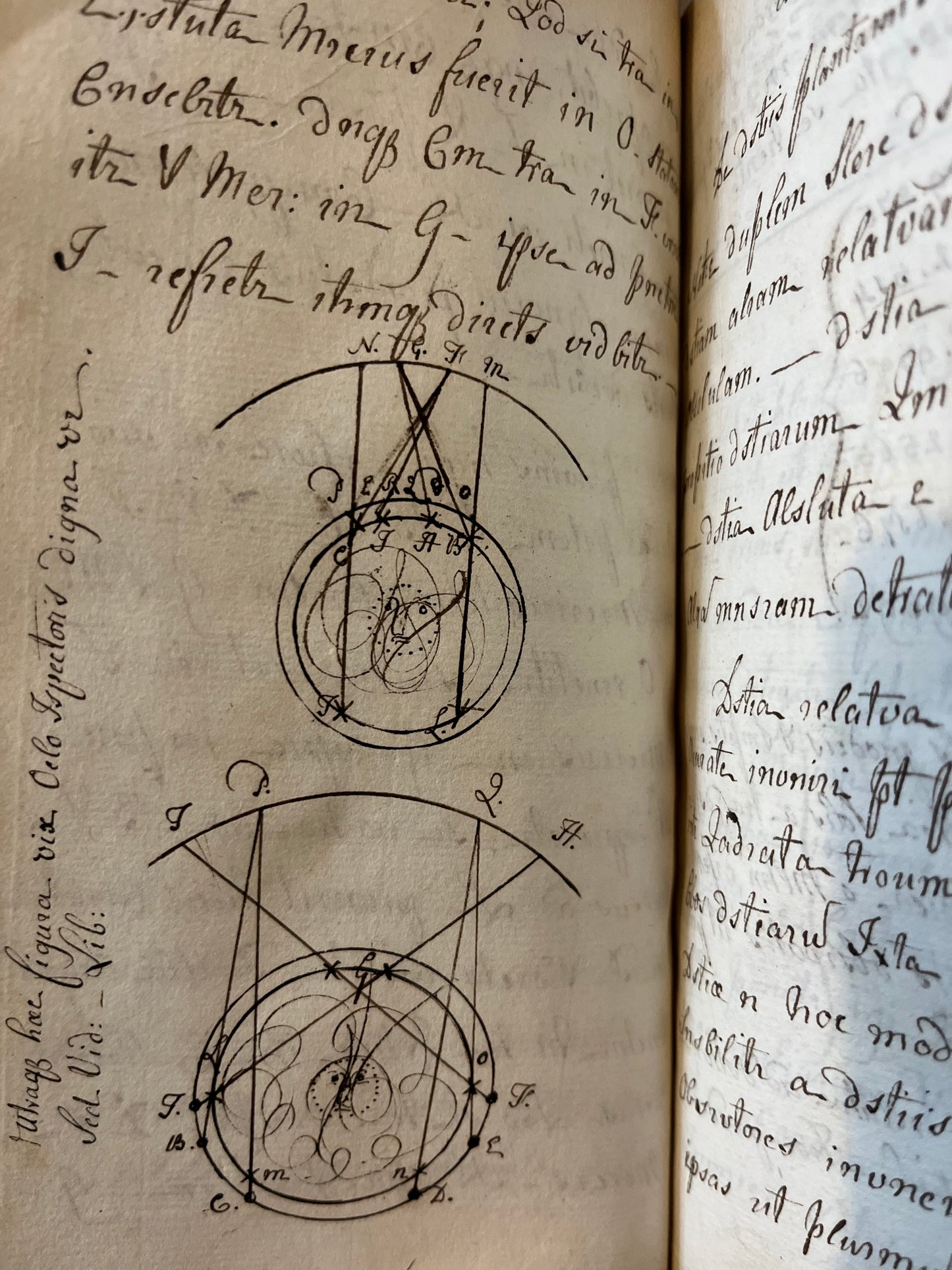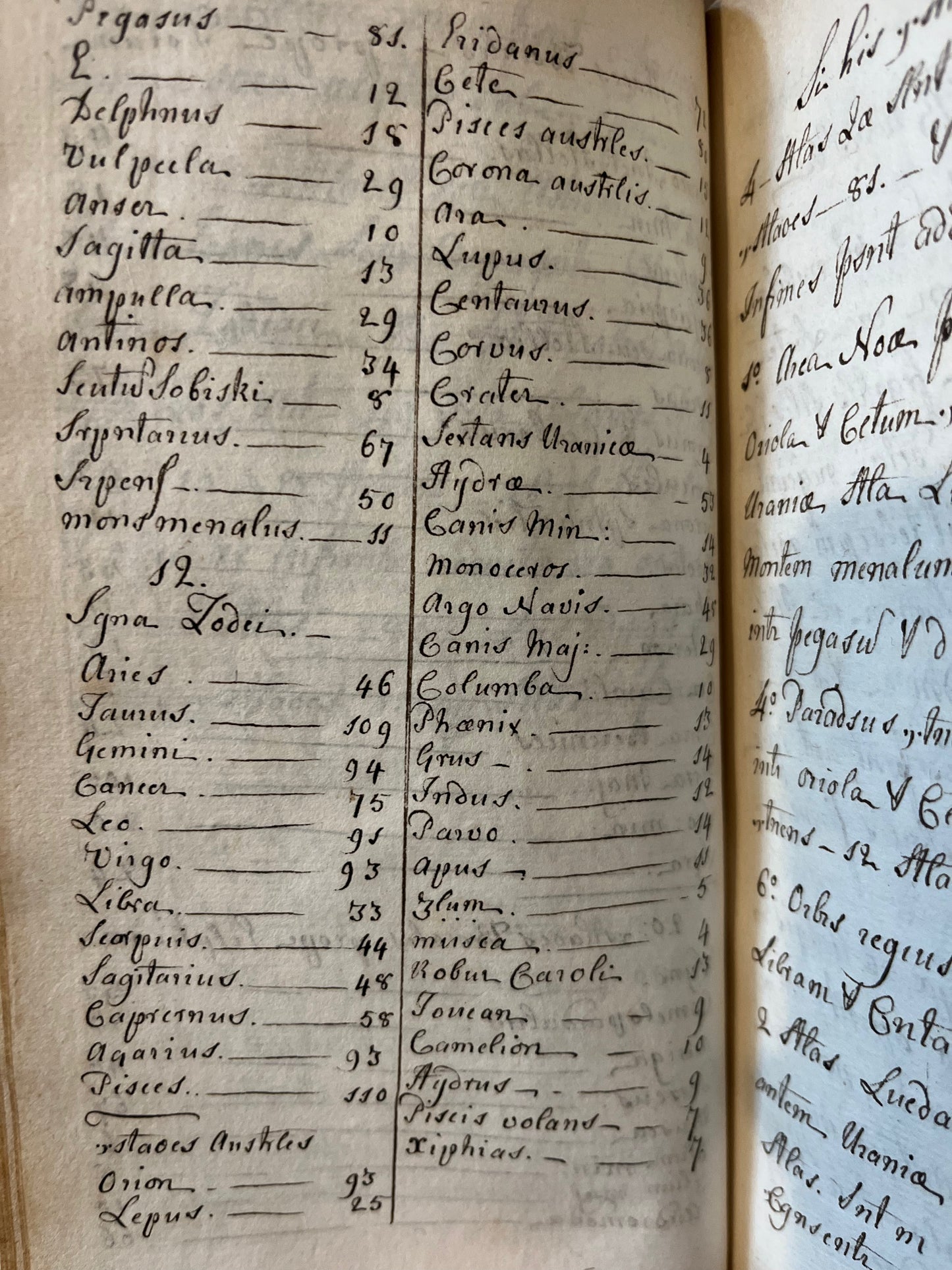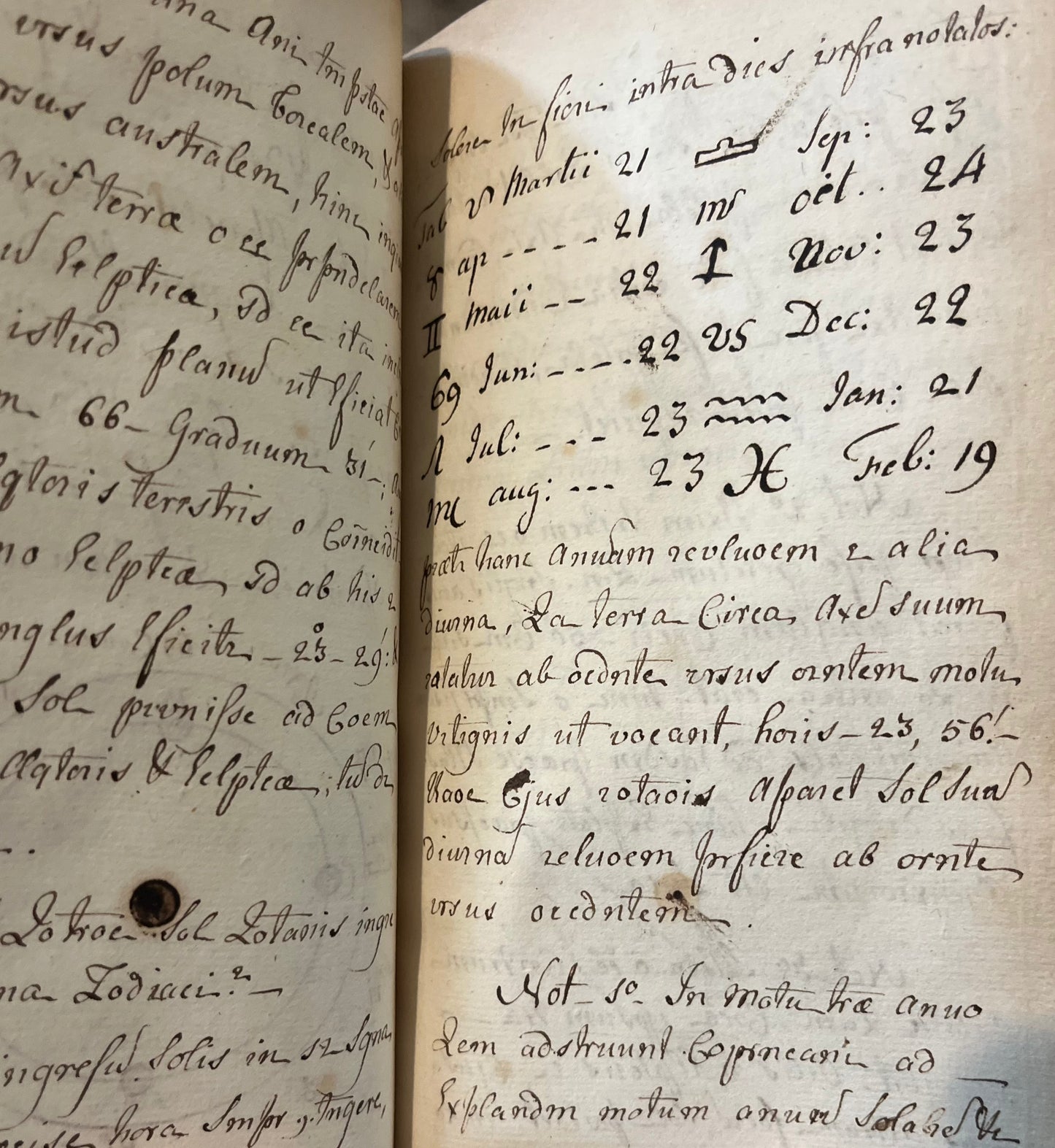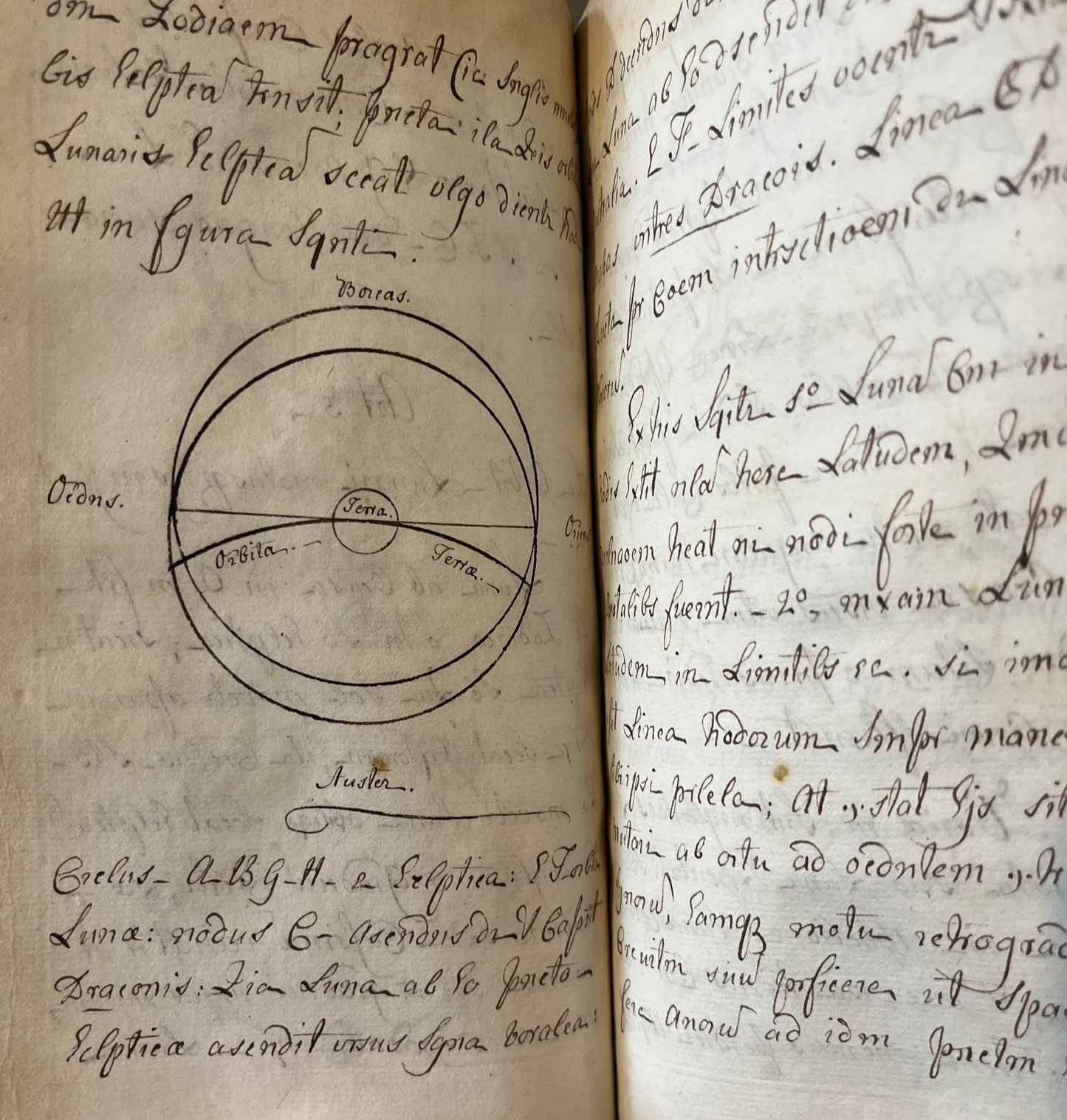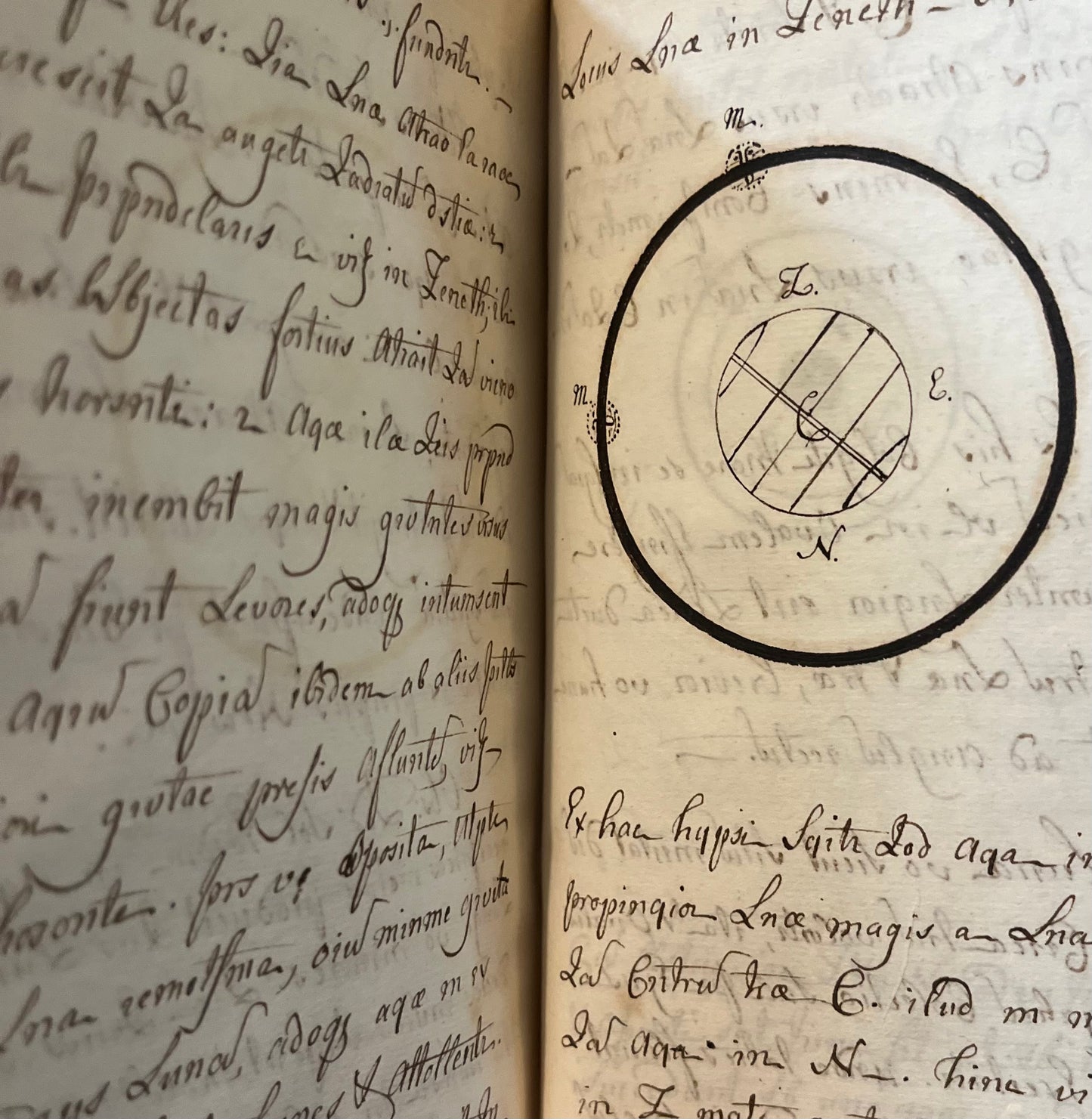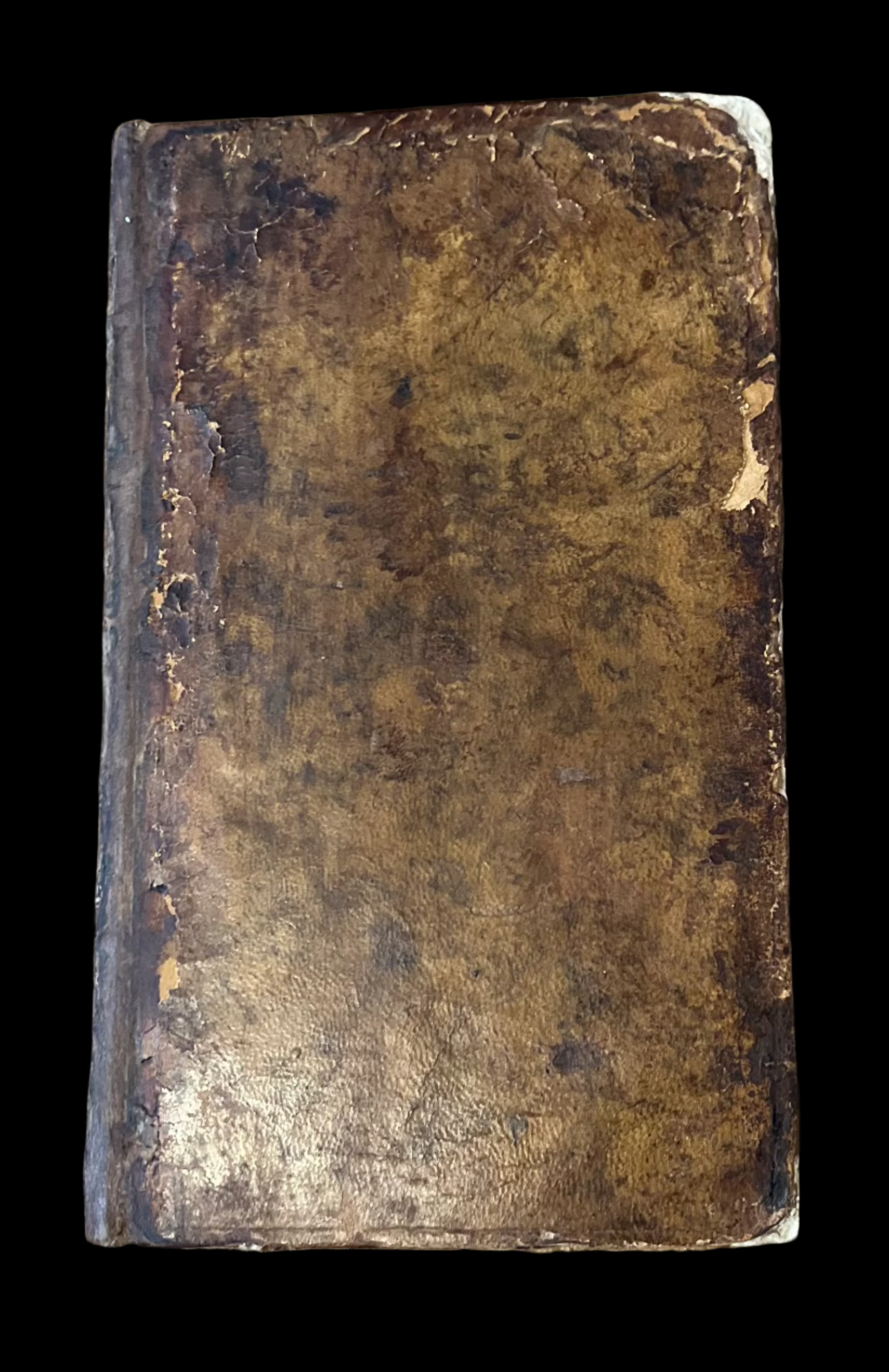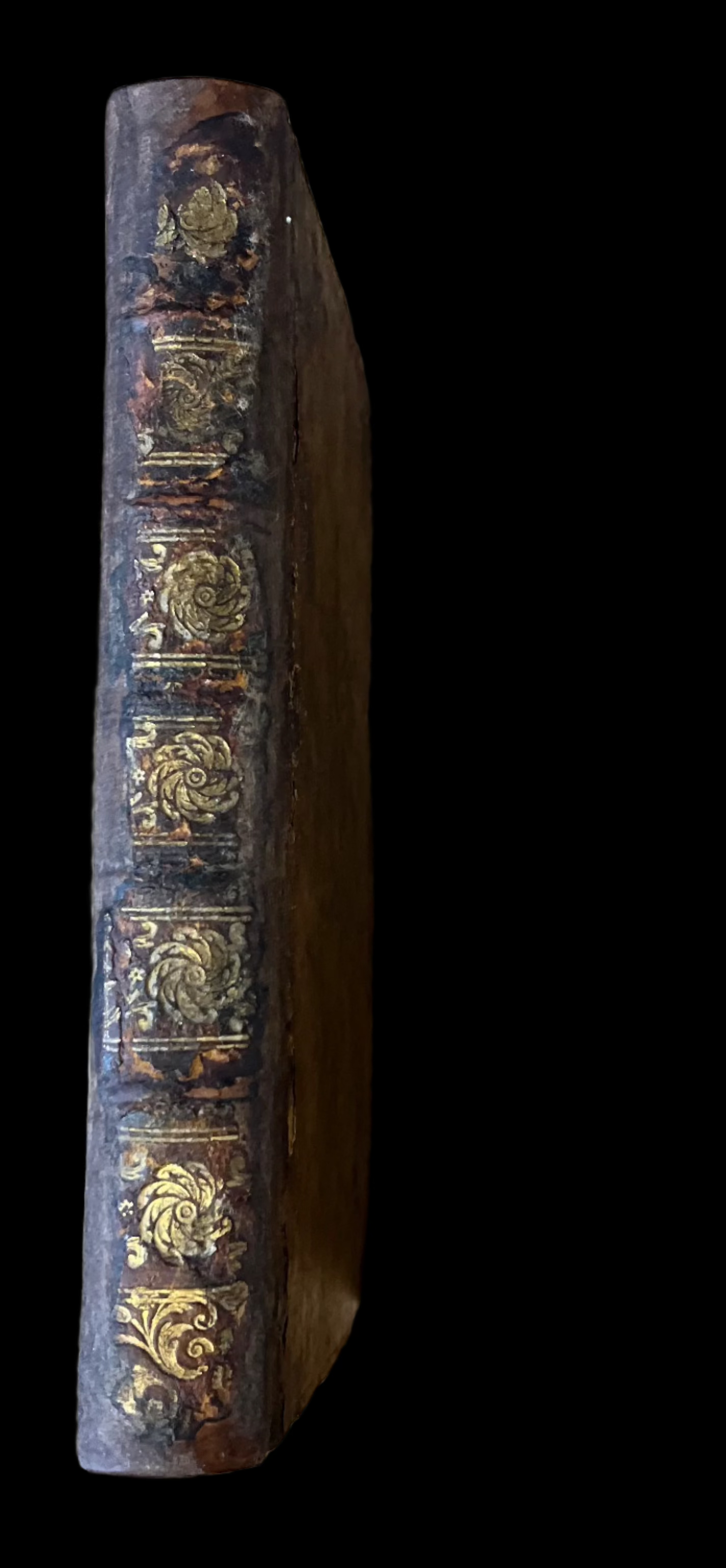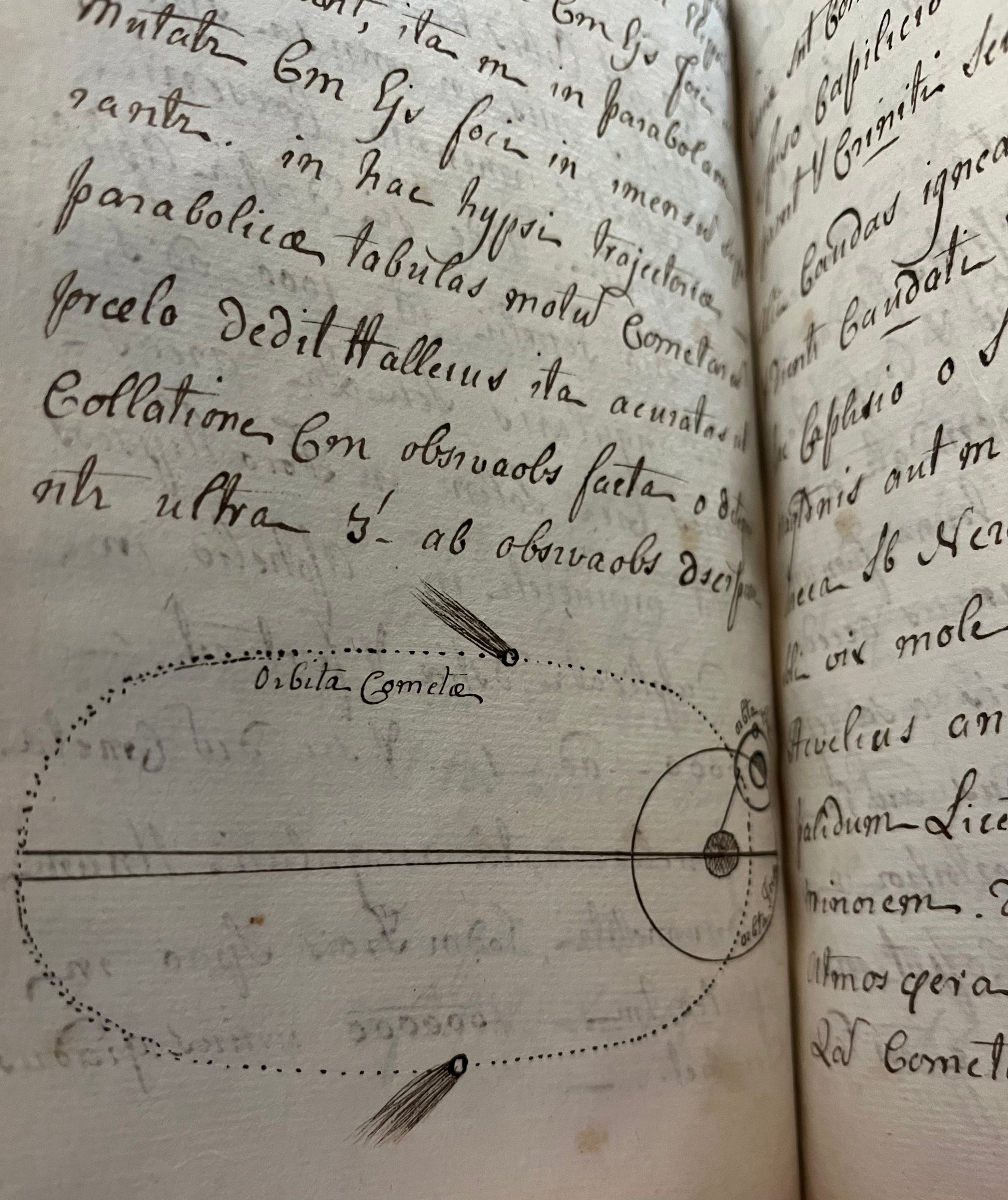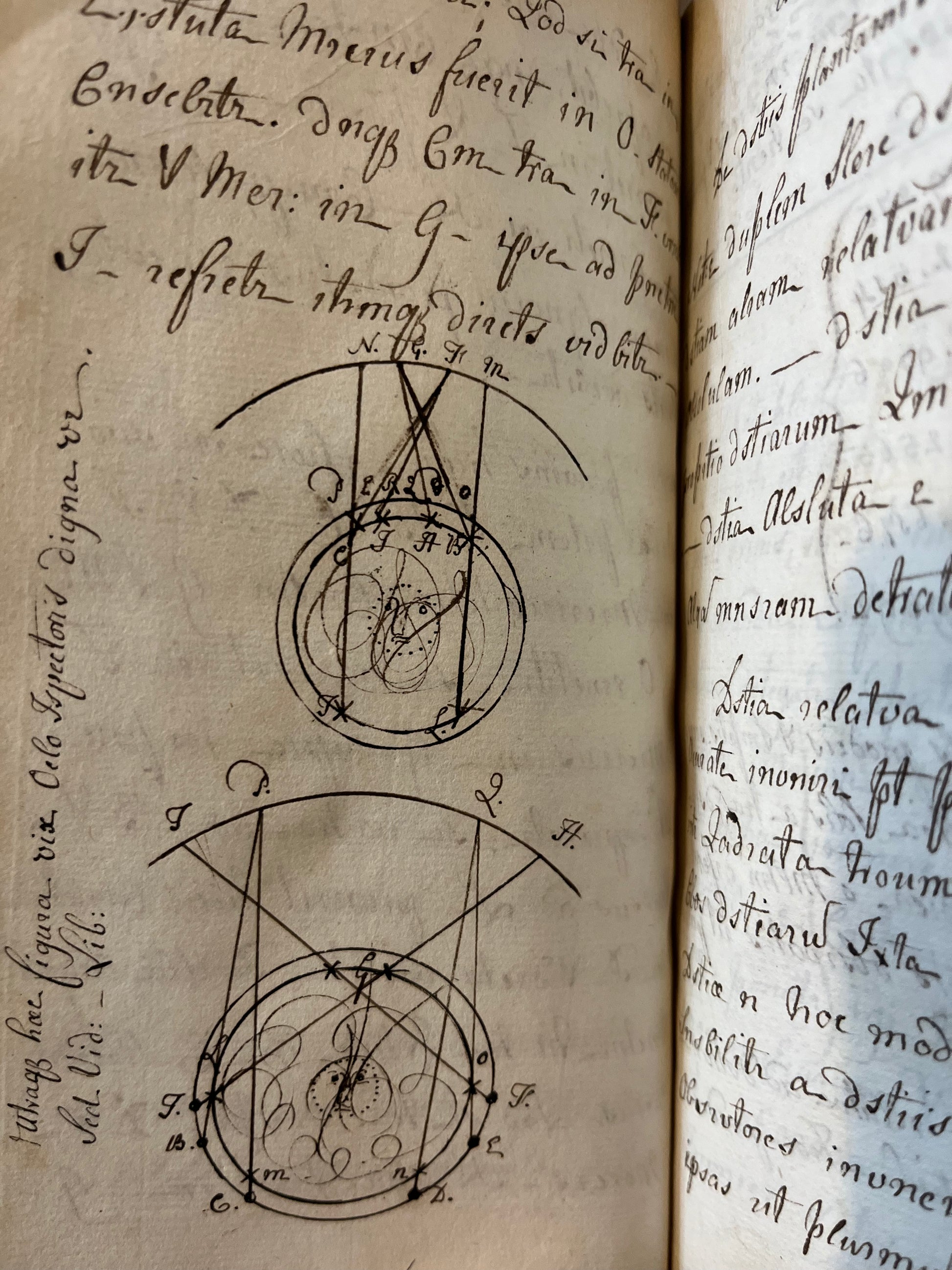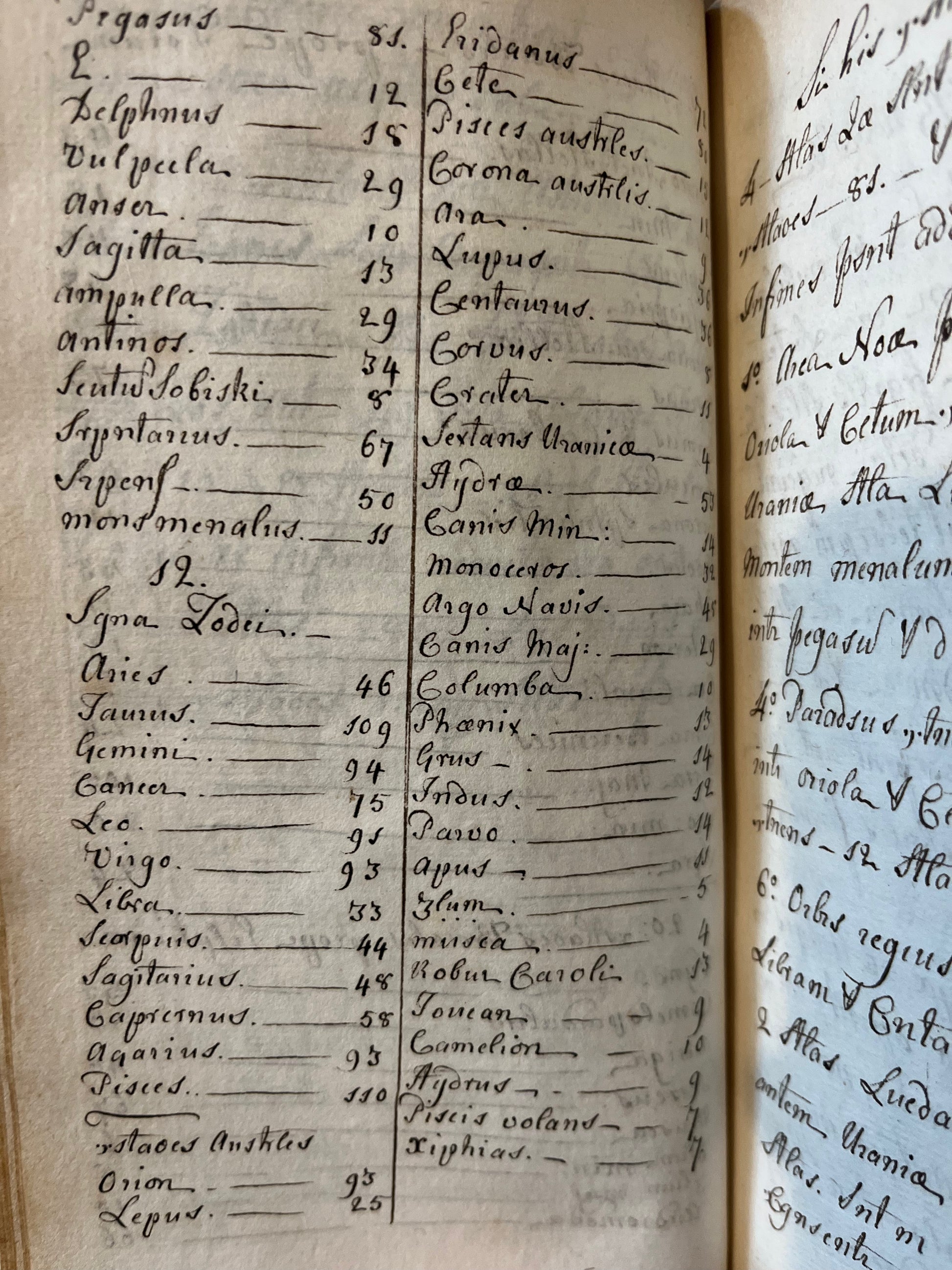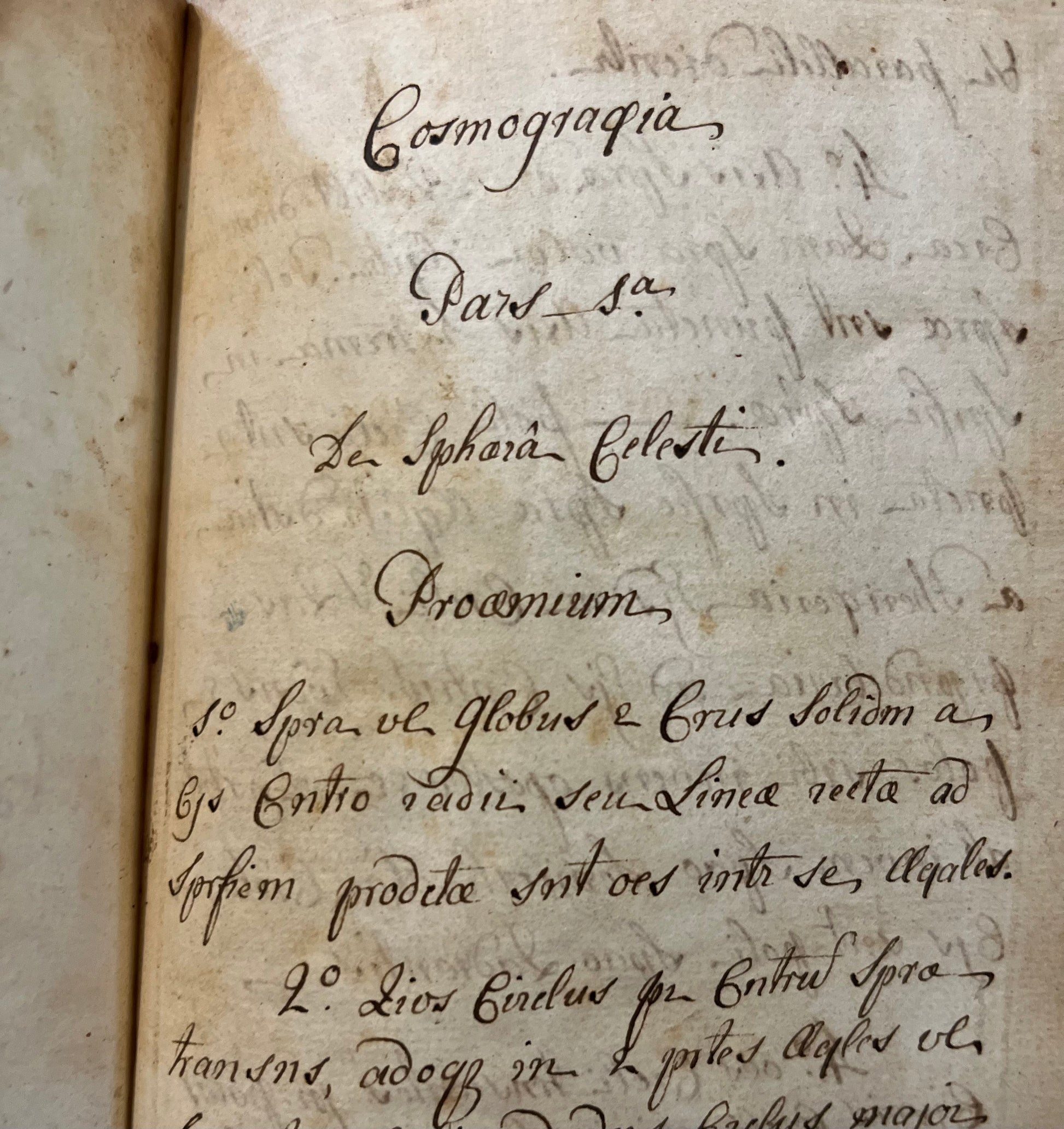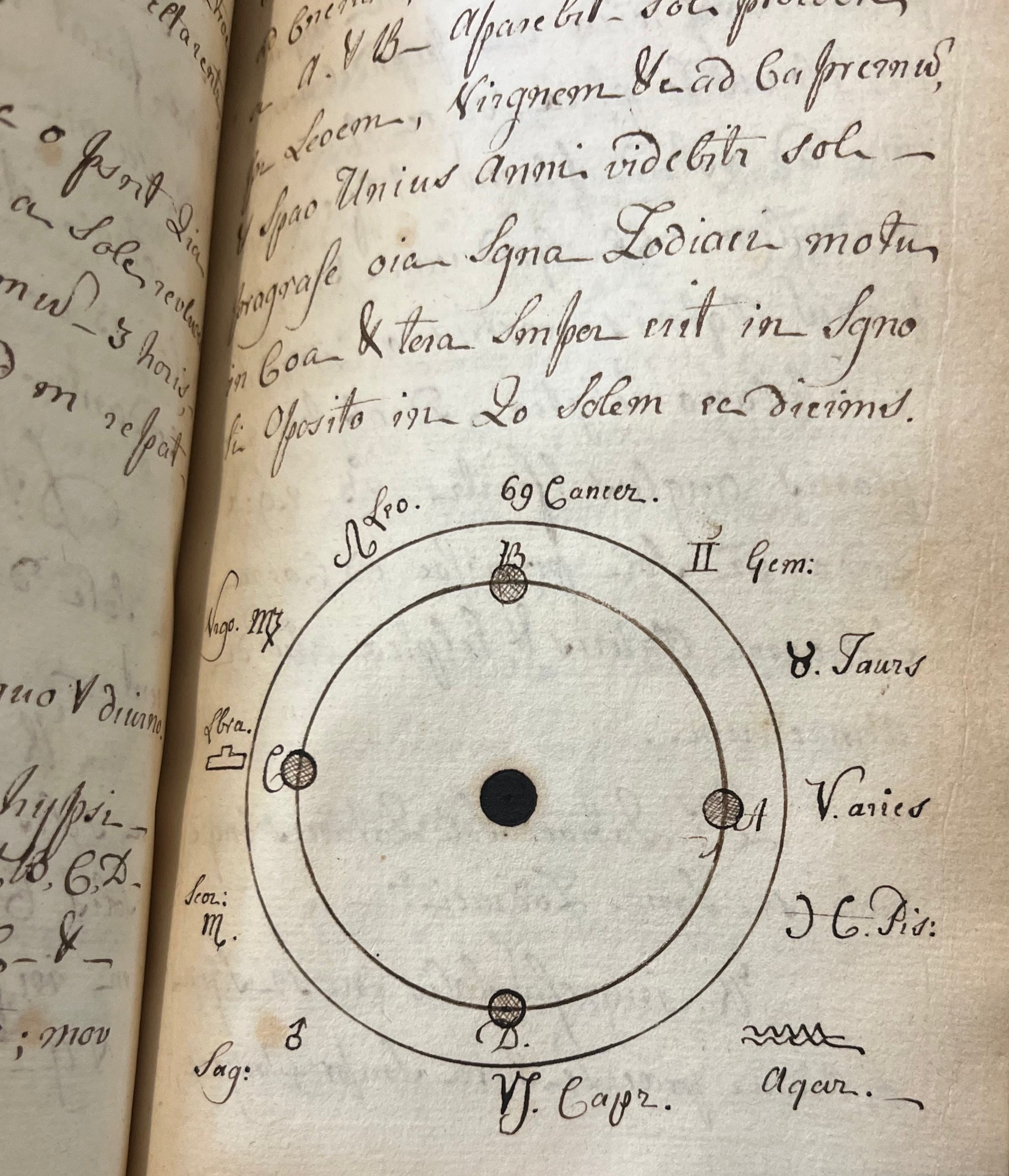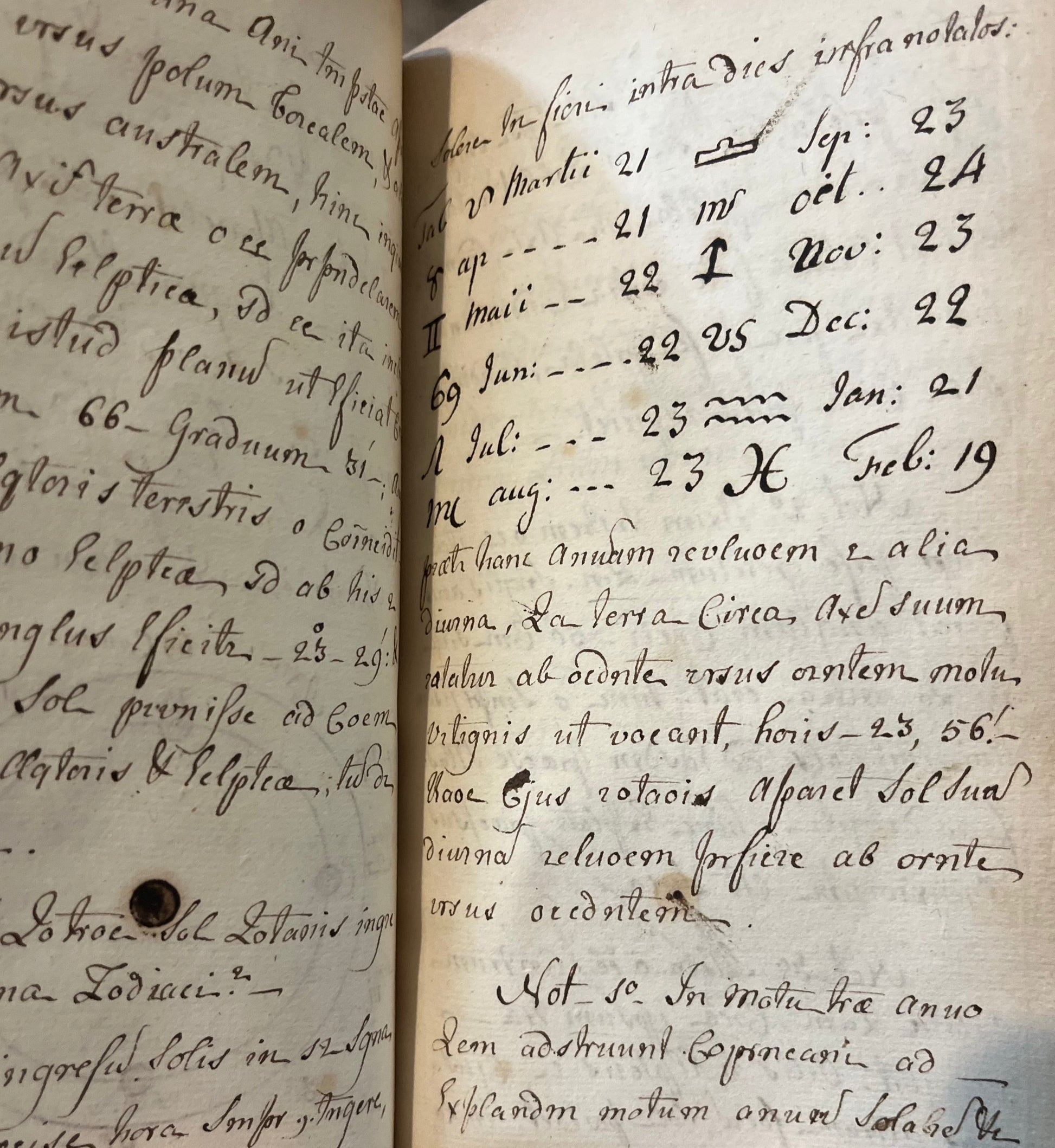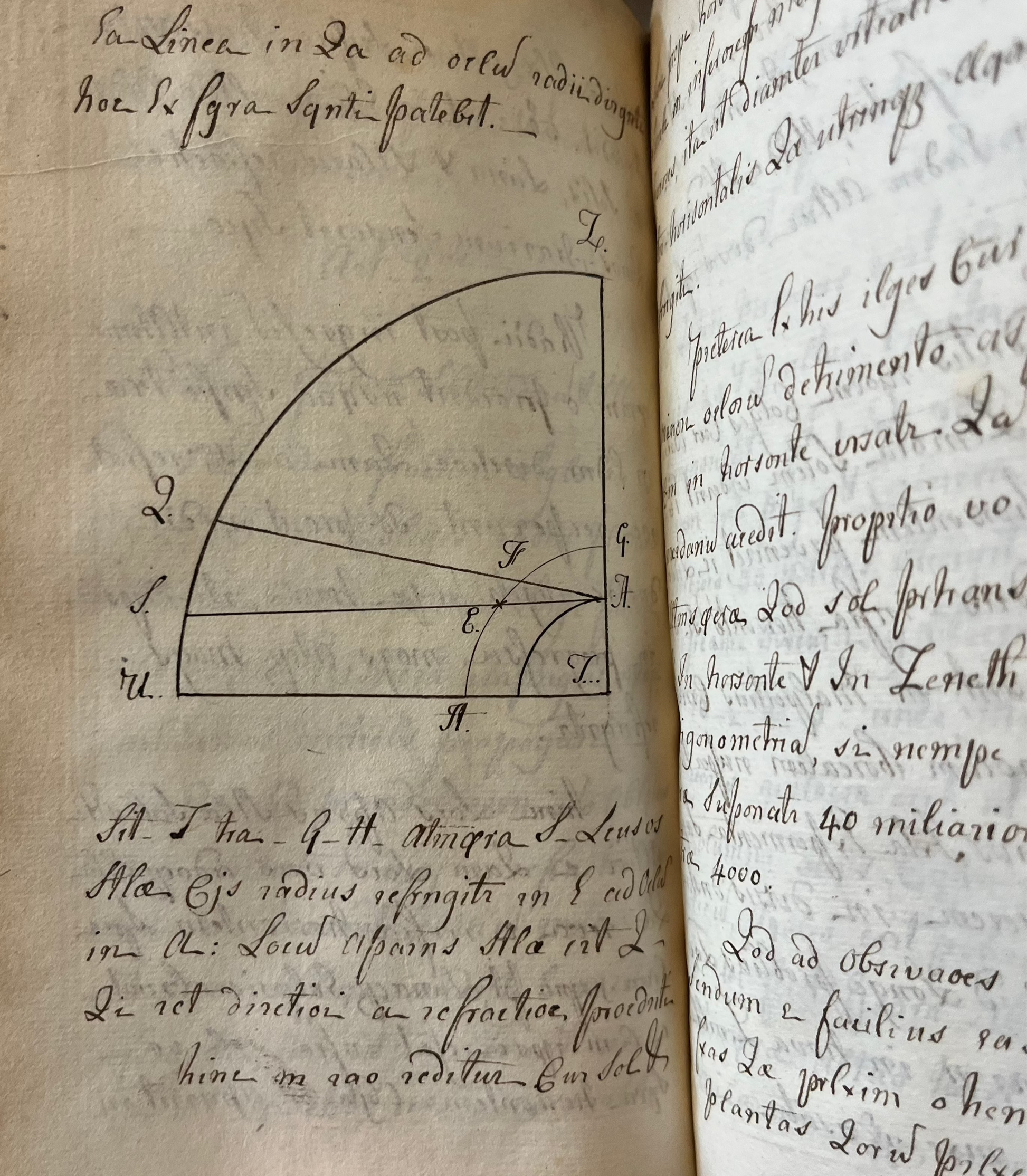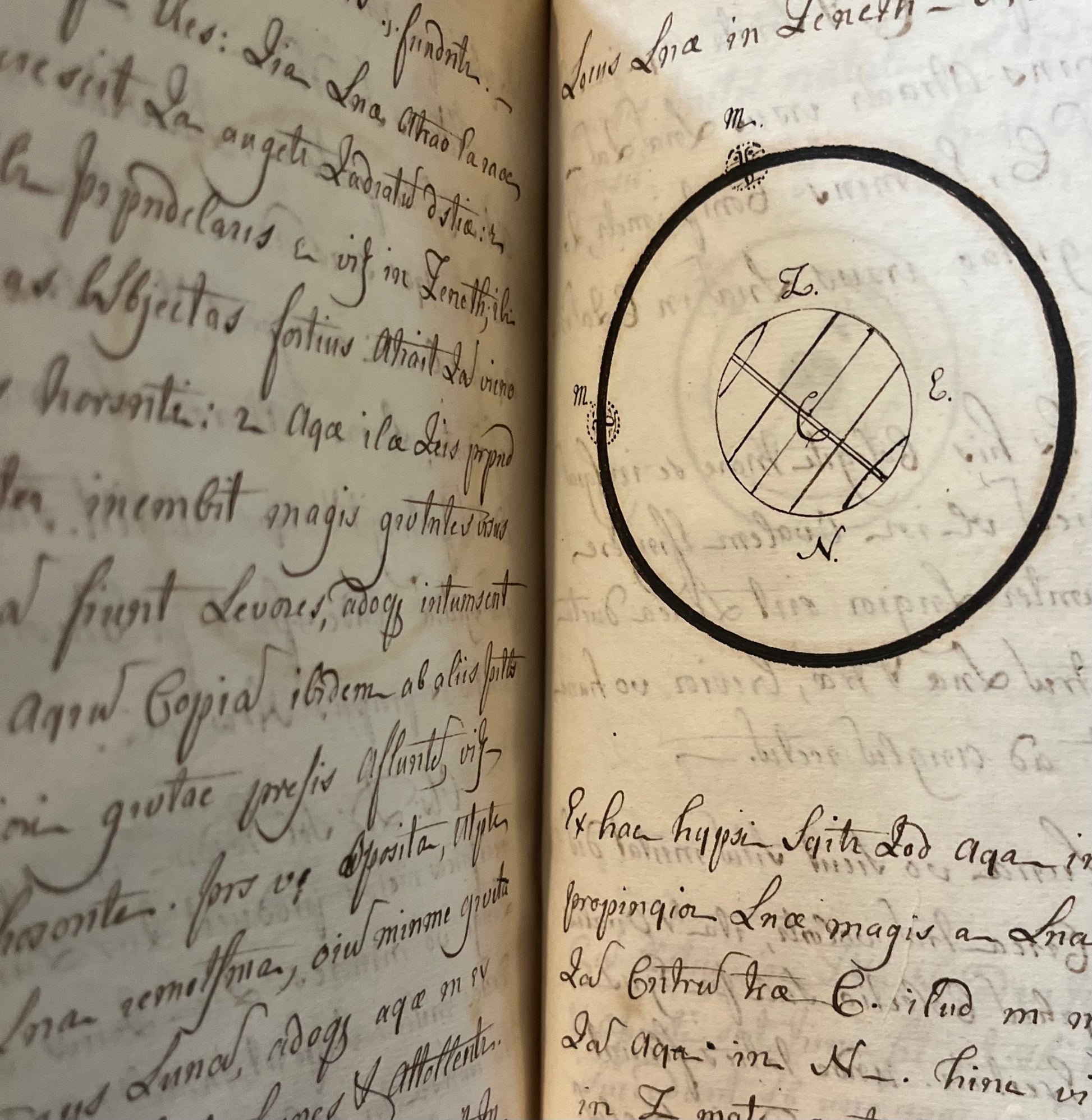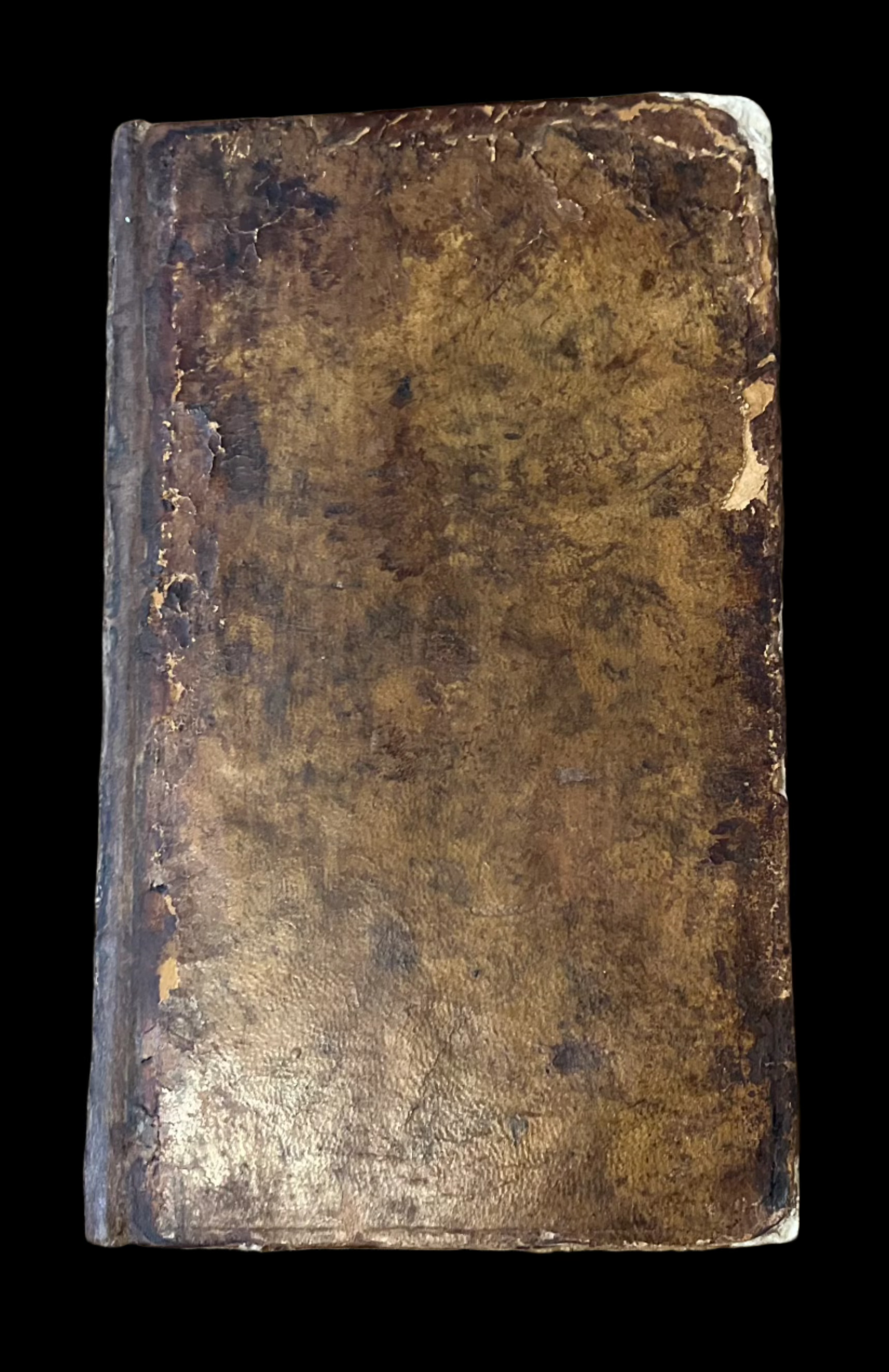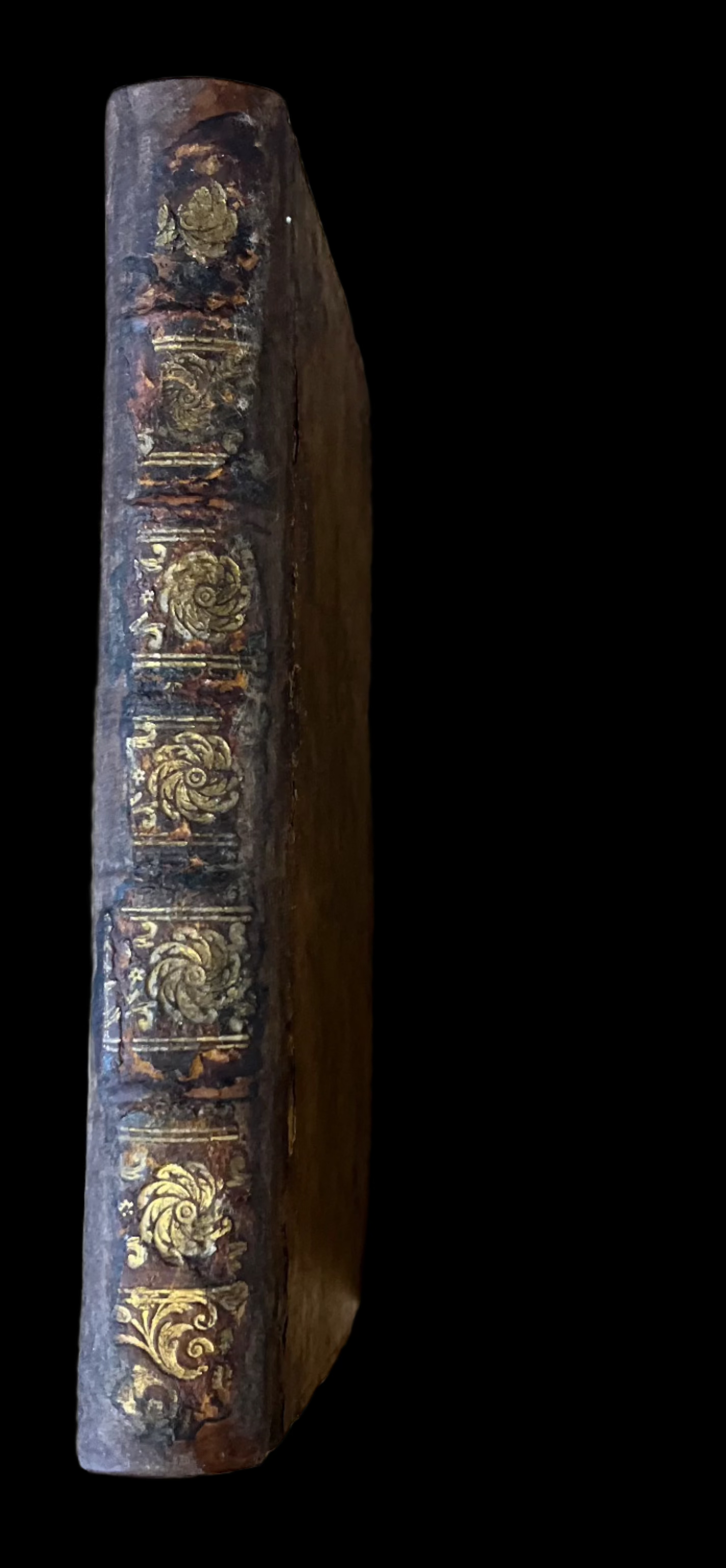De Bry Rare Books
18th Century Latin Manuscript on Astronomy of English Origin - "Cosmographia" - Newtonian Astronomy
18th Century Latin Manuscript on Astronomy of English Origin - "Cosmographia" - Newtonian Astronomy
Couldn't load pickup availability
18th-Century Latin Manuscript on Astronomy of English Origin– Cosmographia
– Approximately 200 pages of manuscript in a neat mid-18th-century hand
– Octavo format - 19.5 x 11.5cm approx
-Bound in contemporary calf (rebacked, retaining the original spine); some rubbing and loss to corners, internally very good with minor toning and chips to fly papers.
-Manuscript diagrams and tables in text
This is a fascinating and comprehensive early 18th-century English manuscript on astronomy, entitled Cosmographia. It is written in Latin and divided into three parts, followed by a separate tract entitled De Calendrio. The work demonstrates a firm grasp of contemporary astronomical thought, referencing Newton, Tycho Brahe, Copernicus, and Ptolemy (Systema Ptolemaei, Systema Tychonicum, Systema Copernicanum, Newtonianum). Topics discussed include the structure of the solar system, the motion of the planets, comets, stars, and celestial phenomena. The author exhibits a strong mathematical foundation, with descriptions of elliptical orbits and angular calculations.
The manuscript is neatly written on English watermarked paper, and although the author remains unidentified, the style and content suggest a date in the mid 18th century: Newtonian theory is presented as firmly established, yet Uranus is not mentioned, and older astronomical symbols are still in use.
Contents:
Part I – Cosmographia
-
De Sphaerae Celestis
-
De Stellis Fixis
-
De Coeli Systemis
-
On the Motions of the Planets
-
The Sun
-
The Moon
-
Eclipses
-
The Planets
-
Comets
Part II - The Atmosphere
-
Meteors
-
Nebulae
Part III - The Earth
-
Including its dimensions and mineral composition
The accompanying tract, De Calendrio, provides further insight into calendrical calculations and timekeeping.
The manuscript may be a fair copy of an existing textbook or lecture series, and is a unique source for the study of early modern science education and the dissemination of Newtonian knowledge.
Provenance:
With the bookplate of Allan Maxcey Galler (b. 1867, lawyer). From the estate of Marmaduke de Wycliffe, a Fellow of the Royal Society and contemporary of Neville Maskelyne, John Bevis, and William Wales.
